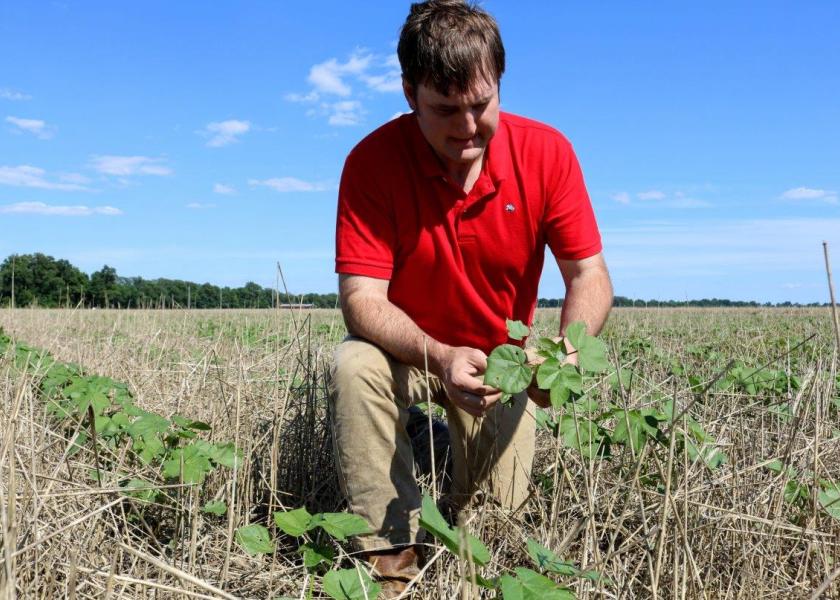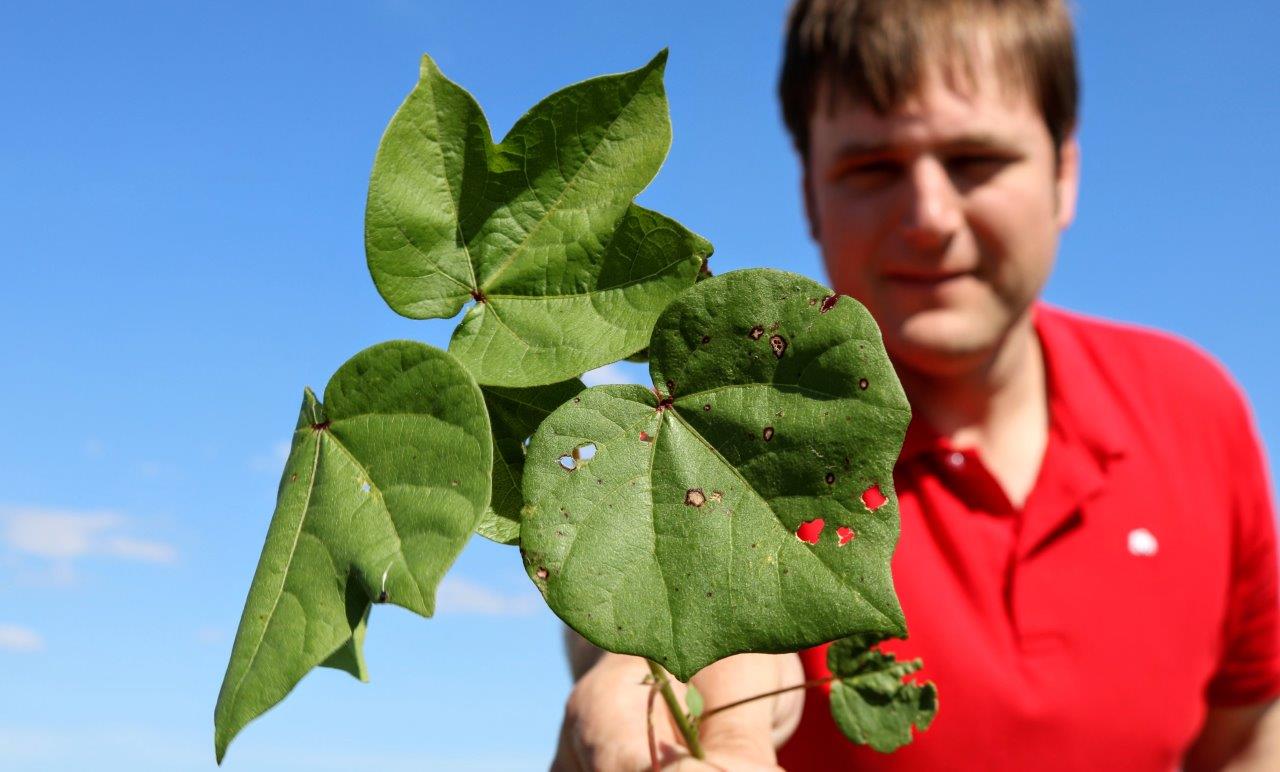Commodity Prices Strong, but Planting Decisions Still a Tricky Farm Puzzle

Farmers plant what the market demands, but matching crop to acre is never a tidy choice—even when commodities are shining. Case in point: It’s not all dollars for Nathan Reed and a 7,000-acre puzzle of corn, cotton, grain sorghum, rice, and soybeans.
Split across Lee and St. Francis counties in northeast Arkansas, Reed, 40, farms on Delta ground wedged between Crowley’s Ridge a mile west, and the old St. Francis River two miles east. Corn above $5, beans in the teens, and cotton at roughly 90 cents is a welcome change. “Higher commodities are great for my operation, and for other guys, and not just based on price. When prices go up, it gives us choices and that means rotation options for a start.”
(For more on Reed, see Misfit Tractors a Money Saver for Arkansas Farmer)
For the last several years, due to anemic prices, Reed pulled corn from his crop mix and paid a price when his cotton yields took a slight dip, but $5 corn opens the door on profit and the rotational benefits of fertility and weed control. “Of course profit is the biggest factor and the biggest influence on my decisions by far, but there are still other issues, like rotation, that go into deciding what acres to plant with a crop. I’ve also got to consider the work load of each crop.”
Piecing the Puzzle
Cotton and rice require significantly more labor and time to produce, but if Reed can pencil identical profit or better on an acre of corn, decisions get a bit tricky. “I’m always a cotton farmer, but if my profit margin is the same on an acre of corn or beans, then I also know they mean far less labor and management. With cotton, you have to take into consideration specialized equipment that must be utilized, but I also don’t want to overload my grain equipment or have to go get another combine.”
Prior to cotton’s climb to 90 cents, Reed had penciled in a major increase in corn and soybeans, and cut back on cotton and rice, but cotton’s latest price push has spurred Reed to reevaluate his acreage plans. However, unless cotton moves even higher and inches toward the 95-cent notch, Reed will keep $5 corn on his weaker acres.
As of the first week of March and likely to shift, Reed has plans for roughly a third of his 7,000 acres in cotton: 500 grain sorghum, 1,000 rice, 1,000 corn, 2,000 soybeans, and 2,500 cotton. “For sure, I need good cotton prices on my operation because of the specialization, but the reality is all crops have been moving together very positively, except for rice (~$13), which is the exception. Rice just hasn’t gone up like the others and we may see a reduction in rice acres if things don’t change.”
Weather rarely holds to a blueprint, but provided Mother Nature throws no curveballs, Reed will start planting corn in late March, followed by soybeans and rice, and plant cotton in mid- to late-April. By mid-May, cotton planting needs completion in Reed’s geography—otherwise yield reduction waits. A May 20 planting and onward means a 1%-2% yield loss per day, he explains, and by June 10, late planting could bring a 10% yield hit. The late-planting yield reductions aren’t a guarantee, but they loom as an average.
Pigs in the Pen
Marketing when commodities are strong is a balancing act between seizing the opportunity of high prices and avoiding a lock-in to a single crop, Reed says. “Maybe a guy like me books 50% of corn acres, and that way, if corn drops, I can go back to cotton. For example, if cotton goes to $1 tomorrow, I may take everything not booked in corn and beans, and switch it to cotton. I like to give myself that flexibility to react if that happens.”
Input spending is also impacted by strong commodities and offers Reed a degree of latitude during the season: “Over the last few years, there have been things I wanted to do that I couldn’t afford, but with these prices I’ll try things to get an extra 3 bushels of beans, or an extra 50 lb. of cotton, or maybe I won’t be afraid to go with extra fertilization or extra sprays.”
As planting approaches, Reed is hopeful U.S. growers are headed for an overall solid financial year—a marked change from the past rut that forced producers to pick the best pig in the pen at planting, despite knowing profit was a slim prospect almost across the board. “It’s refreshing to go into a crop year with the ability to pencil out a profit. It just hasn’t been there for a lot of guys for a while. We all know it can be disheartening to be in an occupation where you look at university budget numbers and see where about every crop says you’ll lose money if you put it in the ground.”
(For more on Reed, see Misfit Tractors a Money Saver for Arkansas Farmer)
In conclusion, Reed stresses the need for balance as farmers pair crops with acres: “You have to respond to the market and at the same time you don’t want to jeopardize your operation by making bad planting choices. I like to run my farm with a balanced, leveling effect. Bottom line, I’m not going to let dollars be the single influence on my planting decisions, but I’m going to respond and take full advantage of higher prices.”
For more, see:
Fleecing the Farm: How a Fake Crop Fueled a Bizarre $25 Million Ag Scam
US Farming Loses the King of Combines
Ghost in the House: A Forgotten American Farming Tragedy
Rat Hunting with the Dogs of War, Farming's Greatest Show on Legs
Misfit Tractors a Money Saver for Arkansas Farmer
Predator Tractor Unleashed on Farmland by Ag's True Maverick
Government Cameras Hidden on Private Property? Welcome to Open Fields
Farmland Detective Finds Youngest Civil War Soldier’s Grave?
Descent Into Hell: Farmer Escapes Corn Tomb Death
Evil Grain: The Wild Tale of History’s Biggest Crop Insurance Scam
Grizzly Hell: USDA Worker Survives Epic Bear Attack
A Skeptical Farmer's Monster Message on Profitability
Farmer Refuses to Roll, Rips Lid Off IRS Behavior
Killing Hogzilla: Hunting a Monster Wild Pig
Shattered Taboo: Death of a Farm and Resurrection of a Farmer
Frozen Dinosaur: Farmer Finds Huge Alligator Snapping Turtle Under Ice
Breaking Bad: Chasing the Wildest Con Artist in Farming History
In the Blood: Hunting Deer Antlers with a Legendary Shed Whisperer
Corn Maverick: Cracking the Mystery of 60-Inch Rows
Against All Odds: Farmer Survives Epic Ordeal
Agriculture's Darkest Fraud Hidden Under Dirt and Lies










